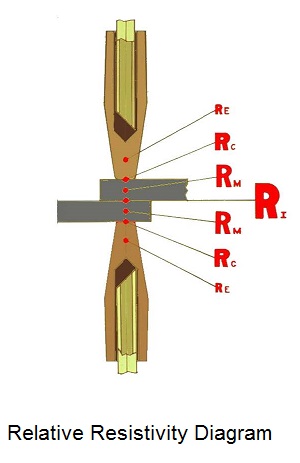Force is one of the main inputs of the weld machine in the form of pressure exerted by the electrodes on the work piece. The main function of this force is to contain the weld by holding the work pieces together tightly during the welding operation. Stronger work piece materials require higher welding forces than weaker work pieces. With adequate force the contact resistance between the electrode and part is minimized and more energy is transmitted into the part to heat the interface between the two sheets being welded.
The other reason for good forces is that when the energy begins to form plastic or moltan material, it must be contained. If this molten metal is expelled there could be insufficient material left to form a weld nugget and bond the part together. Additionally if the force is low the contact resistance will be high and the surface between the electrode and part will heat up and could generate expulsion from the the contact surface where the electrode contacts the part. This damages both the part and the electrode surface.
Maintaining the proper pressure during a welding operation is very important to obtaining good welds and a long running operation.

Reference: RWMA - Resistance Welding Manual 4th Edition

